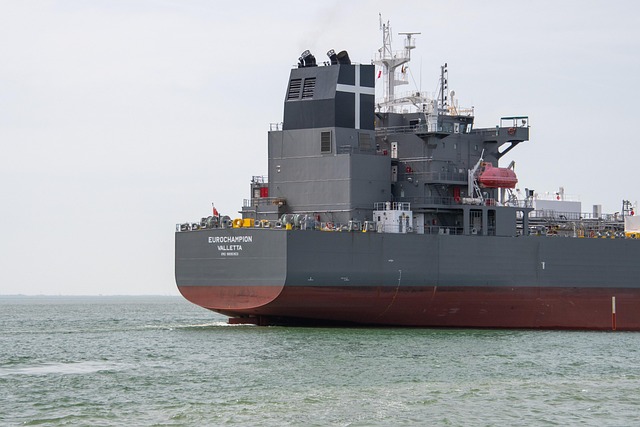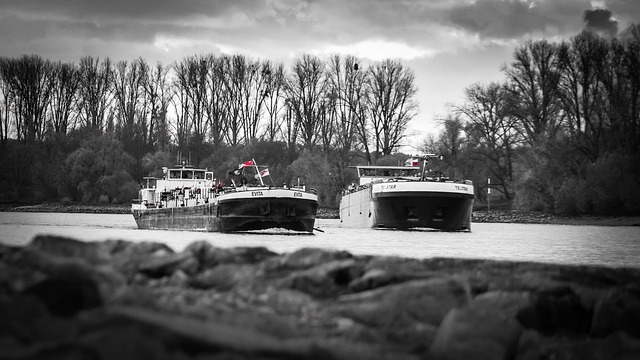Understanding standard 20ft and 40ft shipping container sizes is crucial for efficient project planning in global trade. Each offers distinct interior space, exterior footprint, and door sizes to cater to diverse cargo needs. Customizing container sizes through high cube options, specialized designs (refrigerated, flat rack), or tailored dimensions provides significant advantages for optimizing space and aligning with unique project requirements. This flexibility ensures efficient loading, unloading, and storage for oversized, heavy, or unusual goods while maintaining structural integrity. From standard ISO measurements to wider, longer variants, custom shipping container sizes are transforming projects across sectors by maximizing efficiency and space utilization.
In today’s world, flexible solutions are key, and this is especially true for shipping. Traditional shipping container sizes often fall short of meeting unique project requirements. This article explores the benefits and considerations of customizing shipping container sizes, offering tailored solutions for diverse needs. We’ll delve into understanding standard sizes, the advantages of customization, and crucial design factors. Through inspiring case studies, discover how bespoke containers are revolutionizing projects worldwide, proving that when it comes to shipping, one size does not fit all.
- Understanding Standard Shipping Container Sizes and Their Limitations
- Benefits of Customizing Container Size for Unique Projects
- Key Factors to Consider When Designing Your Ideal Container
- Case Studies: Successful Projects with Customized Container Dimensions
Understanding Standard Shipping Container Sizes and Their Limitations

Understanding standard shipping container sizes and their limitations is crucial when planning a project that requires transportation and storage solutions. While containers come in various dimensions, the most common are 20ft and 40ft in length, with heights typically ranging from 8 to 9 feet. These standard sizes have been the backbone of global trade for decades, offering efficiency in logistics and easy stacking for optimal storage. However, they may not always fit every project’s unique requirements.
Each shipping container size has specific interior dimensions, exterior footprint, and door sizes that impact its usability. For instance, high cube containers provide extra headroom, ideal for bulky or tall items. Sizes like 20ft high cube and 40ft high cube offer enhanced vertical space compared to standard containers. Other specialized containers include refrigerated units, flat rack, open top, and modular designs tailored for specific cargo types, such as temperature-controlled goods, oversized loads, or unconventional shapes. A comprehensive shipping container size guide or chart can help project managers choose the right container based on their needs, ensuring efficient transportation and optimal utilization of space.
Benefits of Customizing Container Size for Unique Projects

Customizing the size of a shipping container to fit specific project requirements offers numerous advantages. One of the key benefits is the ability to optimize space, ensuring every inch of the container’s interior is utilized effectively. This is particularly crucial for unique projects where standard shipping container sizes may not align with the desired layout or storage needs. For instance, a 20ft high cube container can be tailored to accommodate specialized equipment or oversized goods, maximizing usable floor space and overall capacity.
Furthermore, custom container sizing allows for flexibility in terms of door size, height, width, and length, catering to various loading and unloading requirements. This is especially relevant for projects involving heavy machinery or unusual cargo. A 40ft shipping container size, for example, can be modified with larger doors or specific access points to facilitate efficient movement of large items without compromising structural integrity. Customization also extends to interior features like shelving, dividers, or specialized racking systems, enhancing the overall functionality and versatility of the container for diverse logistical needs.
Key Factors to Consider When Designing Your Ideal Container

When designing your ideal shipping container, several key factors come into play. Firstly, consider the purpose of the container and the specific project requirements. Will it be used for storage, transportation, or a combination of both? This will dictate the necessary interior dimensions, such as the shipping container floor space size and height, including any additional headroom needed. For instance, a refrigerated container size might differ from a standard 20ft shipping container size due to equipment requirements.
Additionally, the external dimensions are crucial, especially when considering how the container will fit through doorways, onto transport vehicles, or into specific spaces. This includes the shipping container length size, width, and height, as well as the door size. For unique projects, a custom container size might be required to accommodate irregular shapes or sizes of goods. For example, a wide flat rack container size could be more suitable for bulky items that need to be exposed to the elements during transport.
Case Studies: Successful Projects with Customized Container Dimensions

Custom shipping container sizes have proven to be a game-changer in numerous projects across various industries. Case studies show that tailored dimensions can significantly enhance efficiency and effectiveness, especially in unique or tight spaces. For instance, a recent project involved a 20ft high cube container that was modified to accommodate specialized equipment with specific height and width requirements. By adjusting the interior size, the client was able to maximize usable space while ensuring seamless integration of their machinery.
Another successful implementation utilized a 40ft shipping container for a retail pop-up store in an urban setting. The project team customized the exterior size to fit a narrow footprint, allowing for a compact yet visually appealing display. Additionally, they enhanced the interior with custom shelving and lighting solutions, optimizing the available space and creating a vibrant shopping experience. These examples highlight how flexible shipping container sizes can be leveraged to meet specific needs, from standard ISO dimensions to more specialized measurements like 8ft, 9ft6in high cube, or even wider and longer variants.
When it comes to shipping containers, one size does not fit all. By tailoring the container size to specific project requirements, businesses can unlock numerous benefits, from enhanced efficiency and reduced waste to cost savings and improved versatility. Understanding both standard shipping container sizes and their limitations, along with key design factors, is essential for determining the ideal custom solution. Successful case studies have shown that customized container dimensions can significantly impact various industries, demonstrating the value of breaking away from conventional standards.
